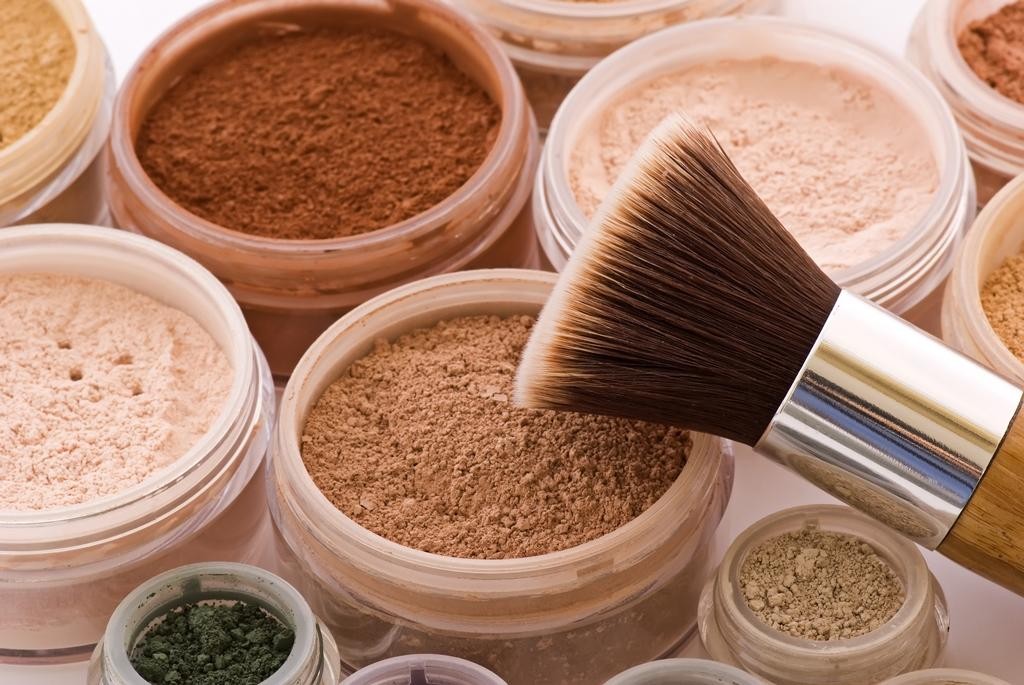It’s funny – the more beauty research I do for my new book, the more I realize how confusing things are for the regular gal who wants to find healthy beauty products that perform as well, if not better, than its less “Natural” counterparts.
A case in point is “Mineral” Makeup – it sounds healthier, right? But not necessarily so. It’s like the term “natural”, which means absolutely nothing. “Mineral” makeup, however, means EVERYTHING…as in all makeup is theoretically mineral makeup because all makeup contains mineral pigments for color. So when it’s advertised as a “Mineral” Makeup, it most certainly does not mean that it’s going to be a healthier makeup.
Instead of looking at the verbiage on the front of the label (as in “Mineral”, “Natural” and “Anti-aging”), turn the container over and look at the ingredients on the back. Because the cosmetic industry is so unregulated, we need to get smart about ingredients, and really understand what we are slathering all over our beautiful faces everyday.
The first thing to look for is ingredients that we recognize as being good for our skin: You don’t have to look hard at good formulations to see ingredients like Aloe Vera, Hyaluronic Acid, and Pure Essential Oils – ingredients which will hydrate, soothe and deliver important antimicrobial agents to your skin. We need to start looking at makeup more as skin care – as way of nourishing our skin, rather than hiding it from the world because we don’t like whats underneath. Think of your makeup like your food: you want to avoid cheap additives and preservatives, and eat fresh, whole and nourishing food, right? Same with makeup – you want quality, healthy and nourishing ingredients with which to feed your skin.
I could, (and DO, in my up-coming new book) write about every single kind of makeup, and go into great detail about the formulations, but for the purpose of this blog, I wanted to focus on Mineral POWDER makeup. Again, this is touted as being way better for your skin, and for some people it may well be, but you have to get the GOOD stuff. Here’s what you need to look for:
- Formulations that don’t contain Bismuth Oxychloride – this is drying and irritating for many women
- Formulations that are talc -free. Talc tends to sit on top of your skin, and it’s a big pore-clogger.
- Companies that DON’T use non-Nanoparticles. Nanoparticles are the teeny particles that can easily be inhaled, which could lead to serious respiratory issues. The issue of whether or not these particles can be absorbed by the skin into your blood has not been substantiated, so for now the issue of inhaling the particles is what we need to focus on.
- Look for a pressed powder compact, as this eliminates the issue of the loose powder (and possible Nanoparticles), flying everywhere.
- A good Kabuki brush for application: You always need to use a flat-bottomed Kabuki brush because it’s easier to pick up the powder on this kind of brush and deposit it onto your skin with a minimal amount excess dust.
- A good anti-oxidant laden hydration spray (Jane Iredale carries a lovely one,) with which you can spritz your brush before you swirl it into your mineral powder – this will further mitigate the powder flying everywhere, will nourish your skin, and help set the makeup.
- Are you better suited to Mineral Powder or Mineral Liquid foundation? It depends on your skin type. If you have oily, rosacea, acne or very sensitive skin, then the mineral powder might be a wonderful choice for you. However, if you have dry/mature skin, you may need to go to a liquid mineral for the extra hydration.
Either way, be sure to pick a brand who has a reputation for being healthy, and furnishes you will a full-ingredient list of recognizable ingredients on their website.


